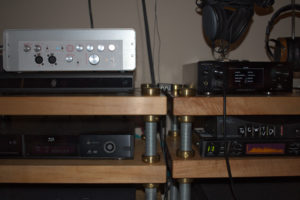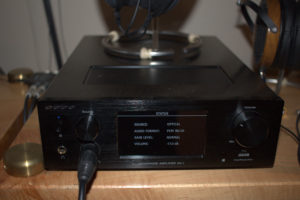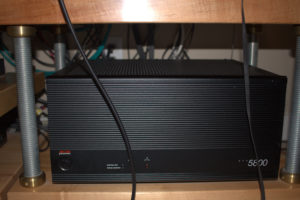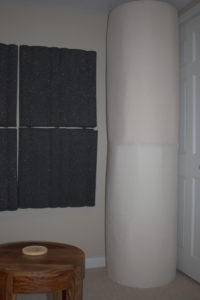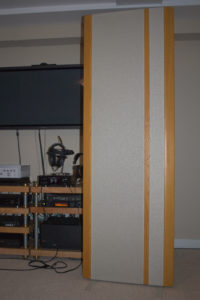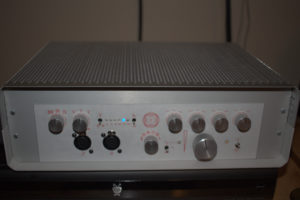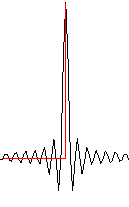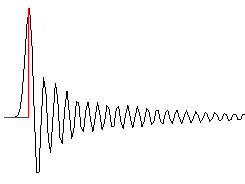This is part 8 of an 8 part series comparing the Meier Corda Soul and Oppo HA-1. Click here for the introduction.
Conclusion
Subjective Listening Impressions: Soul
- They sound similar which is expected for DACs/preamps that are well engineered with excellent specs. Both are very neutral, transparent DACs. If you’re looking for euphonics, look elsewhere!
- However, the degree of similarity surprised me. I had to listen extremely carefully to specific recordings that I know well, to hear reliable differences. And even then, the differences were subtle.
- The differences were easier for me to hear on speakers. I suspect this is because my speakers are more neutral and resolving than my headphones.
- Speakers more resolving than headphones are rare, so most people, especially those with revealing headphones that are harder to drive (like the HD-800), will hear differences more easily on headphones than on speakers.
- To characterize the differences is to overstate them. But here they are:
- Oppo: Earthy, Organic, Airy
- Soul: Pure, Taught, Resolving
- Detailed summary of audible differences:
- HF: Oppo has a touch more air; Soul has equal extension but less air. The first impression is slightly less HF from the Soul, but on deeper listen it is all there, yet less subjectively emphasized.
- Ultimately, “all there but less emphasized” seems truer to live acoustic music, though different from what we normally perceive as “HiFi”.
- Is “air” a barely perceptible hiss or noise that accentuates detail through stochastic resonance? If so, it’s a double-edged sword.
- NOTE: “air” in the recording itself, like hearing the space in a good cathedral recording, is all there with both Soul & Oppo.
- Treble: the Soul treble is smoother, making the Oppo sound slightly grainy in comparison. Though I would not say Oppo has grainy treble. The Soul’s treble response is unique in its naturalness.
- Also: they balance the fundamental against harmonics slightly differently; Oppo emphasizes harmonics, Soul emphasizes fundamental. Each is a only a subtle variation of difference, both have uncolored voicing, and which sounds most natural depends on the recording.
- Mids: Oppo is earthy or slightly “dirty”, with a hint more presence that adds a sense of extra detail in some recordings, slightly veiling in others. Soul sounds more transparent and pure, normally a good thing, though with some recordings sounding “sterile”.
- The Soul has slightly greater midrange clarity. It never revealed a musical detail the Oppo completely obscured, but it occasionally surprised me, revealing details I had never noticed with the Oppo, though after hearing it on the Soul I was able to hear it on the Oppo.
- Bass: Oppo has more power in the bottom octave (< 30 Hz). Soul is more controlled with better defined bass timbre and slightly more mid-bass energy.
- Transient response: Oppo has a bit more snap which sounds faster, but it also has a bit more ring / longer decay. Soul is cleaner, which can sound a bit “dead” at first but on deeper listen it doesn’t seem slower or smeared.
- To avoid confusion, I didn’t try the Soul’s alternative minimum phase AA filter (though I’ve tried these before on other devices; the difference is subtle, but I usually prefer the linear phase “sharp” filter).
- I did measure the effect of the Soul’s alternative AA filter. Comparing square waves, it eliminates pre-ripple, at the expense of rippling longer & louder after the impulse.
- Dynamics: Soul is punchier with bigger macro-dynamics. Both have excellent micro-dynamics, though the Soul sounds darker between plucks/smacks, which hints at faster decay, lower noise or distortion.
- It took time listening to a variety of music to establish a preference.
- Sometimes the Oppo’s earthy airiness added realism and refinement. Other times, it slightly veiled what the Soul made more clear.
- Sometimes the Soul’s tonal purity made the Oppo sound veiled in comparison. Other times, this purity sounded sterile where the Oppo sounded organic.
- With more listening across a wide variety of music I came to find the Soul more transparent and true to the source. What clinched it was piano and voice, which highlight the Soul’s clean, pure midrange.
- HF: Oppo has a touch more air; Soul has equal extension but less air. The first impression is slightly less HF from the Soul, but on deeper listen it is all there, yet less subjectively emphasized.
Engineering: Soul
- The Soul has several engineering features that differentiate it from other high quality solid state DACs:
- Volume control: It changes metal film resistors in the gain-feedback loop, rather than attenuating a fixed gain, so there is no potentiometer in the signal path.
- Advantage: lower noise and perfect channel balance at all volume settings, no loss of SNR at low to medium volume settings.
- Sometimes with a stepped attenuator the perfect volume you want is between clicks. But this never happened with the Soul; it averages about 0.5 dB per click which is fine enough to set the perfect level.
- Meier “FF”: The Soul’s digital and analog stages are frequency-shaped to reduce distortion and noise in the midrange and treble where the ear is most sensitive.
- Power supply: The Soul has 4 switched power supplies with about 70 mF (a lot!) of filter capacitance: 1 for the digital section, 1 for the USB section, and 1 each for the positive and the negative supply lines of the analog stage. This provides near perfect DC with incredibly low noise and not even a hint of 50/60 Hz ripple.
- DAC implementation: The Soul uses the Wolfson WM8741 DAC in mono mode (where it has a slightly higher SNR), one per channel (L and R). This chip’s analog output pins are balanced, which the Soul maintains all the way to its analog outputs. It also operates the DAC chip in maximum oversampling mode and enables the user to select which digital filter to use (sharp vs. slow).
- Note: the Oppo uses the ESS9018 which has the ESS Hump, an anomaly that increases distortion at the low to medium levels used by most music.
- I believe the above engineering features make the Soul sound subtly different from other top quality solid state DACs, and are the primary contributing factors behind my subjective listening observations.
- Volume control: It changes metal film resistors in the gain-feedback loop, rather than attenuating a fixed gain, so there is no potentiometer in the signal path.
- These features give the Soul a higher level of attention to engineering detail. From an engineering perspective, it’s the right thing to do if you want the best sound at any cost. As an engineer myself I believe in these kinds of features.
- Yet a music lover asks: does this get me closer to the music leading to greater appreciation and enjoyment? Possibly… yet in general not necessarily. With the Soul, I think it does.
- For example:
- Years ago I built a stepped attenuator to replace my preamp. It sounded better than any active preamp I had heard. It revealed subtle musical details that even this very fine preamp (Rotel RC-990BX) veiled.
- I enjoyed it for over 10 years until I replaced it with a dedicated DAC (the Oppo), which incrementally increased transparency.
- Back then, the difference between my preamp and the attenuator were of a similar nature to what I heard from the Oppo to the Soul: incrementally improved purity and clarity.
- At this level of engineering and quality the equipment measures as perfect as engineering can make it. Reliably hear-able sonic differences may (or may not!) exist, but if they do, they are subtle and which is “best” is subjective.
Functionality: Tie (different trade-offs)
- The Soul has more DSP features: adjustable filters, EQ, channel mixing, etc.
- I already have a digital parametric EQ (DEQ2496) supporting any number of bands. With this I can fine-tune the output more precisely than the Soul’s tone controls.
- However, that fine-tuning comes at the cost of complexity: I spent hours carefully crafting each set of EQ with measurements and listening, then saved it as a named setting.
- If I’m listening to the occasional music that is imperfectly mastered, the DEQ2496 is too cumbersome to EQ it on the spot.
- The Soul’s controls are much simpler: 4 tone controls equally spaced at 2-octave intervals, digitally implemented.
- Note: the tone control spacing is not equally spaced from the factory, but Jan Meier customized them for me with corner frequencies at 80, 320, 1250, and 5000.
- No recording is perfect and I normally listen to how it naturally sounds, however imperfect. Yet some are more than imperfect, flawed to the point of distracting from the music.
- Here, I use the Soul’s controls to apply a mild correction to get past the imperfections and closer to the music.
- This also applies with headphone listening. The Soul’s cross-feed gives a nice correction to music sources that have artificial hard L-R stereo separation.
- The Oppo has more types of inputs and outputs, both digital and analog.
- The Oppo has Bluetooth and handles a wider range of digital formats (DSD, and additional PCM sampling frequencies).
- The Soul doesn’t have unbalanced inputs or outputs, so you’ll need an unbalanced → balanced converter for unbalanced RCA audio sources.
- In my case that’s OK because none of my unbalanced sources are reference quality (game box, computer).
- With the Soul you’ll need balanced cables for your headphones and if you use its line-outs you’ll need XLR cables for your power amp.
- USB
- My Android phone or tablet never worked with the Oppo’s USB input (it was made for Apple devices).
- But, they do work with the Soul, and apps like USB Player Pro stream the bits without modification, so a mobile device becomes a fully transparent audio source.
Build Quality, Durability, Support: Soul
- Both have great build quality.
- Both get warm during use, but the Oppo much warmer than the Soul–possible longevity disadvantage? The Oppo volume control has a reputation for failing.
- Support: Meier sets an example for the trade with his engineering expertise and enthusiasm for music and engineering. He is responsive and direct with questions and feedback. I’ve never seen better support.
- The Oppo is built better than most consumer gear, both internal (big toroidal power supply, high quality opamps, etc.) and external (case, knobs, etc.).
- But the Soul has the edge here as it levels up to professional hand-selected parts and is built by Lake People in Germany.
- I’ve owned Meier’s Corda Jazz for several years of daily use. It shows no signs of wear; the switches, knobs, case, etc. all like new. It’s at least as solidly built as the Oppo, and the Soul is a step up from there.
- Ten years from now, which is more likely to still be running like new? Probably both, but if I had to pick one or the other, no question it’s the Soul.
This has been a fun and educational week, though my ears and brain will take time to recover from all the critical listening. Good consumer gear has gotten very good indeed, raising the bar. From objective measurements alone, it can be indistinguishable from the best of the best. Yet even someone with an “engineering-first” attitude (myself included) must admit that even gear whose measurements show all forms of distortion below theoretically audible thresholds, still can sound different. We measure much of what we hear, even most of what we hear, but we don’t necessarily measure everything we hear, and the quirks of perception acuity can sometimes surprise us.
The Oppo HA-1 is no longer made, so it’s hard to recommend despite being a fine piece of kit. But if you can find one on eBay, it’s hard to find its equal in sound quality under a kilobuck, and it’s super flexible having many inputs and outputs. However, if you want a DAC, line stage and headphone amp that is among the best available at any price, I recommend contacting Jan Meier and listening to the Soul. Sadly, some expensive high-end gear is just audiophile bullshit. The high price is mainly about fancy cases and knobs, low production numbers, and social signalling exclusivity. It’s great to see engineers like Meier bust that stereotype, justify the price with real engineering features, and demonstrate that well engineered and built equipment really can sound better (even if only slightly, since the bar is so high) and get us closer to the music.
